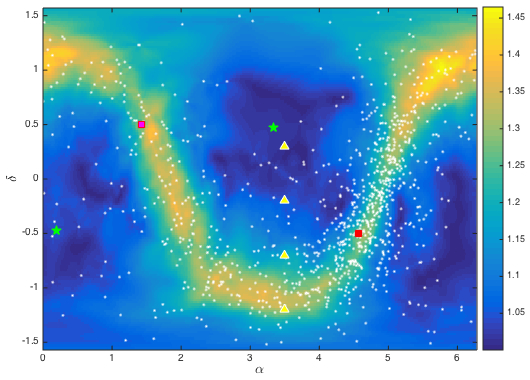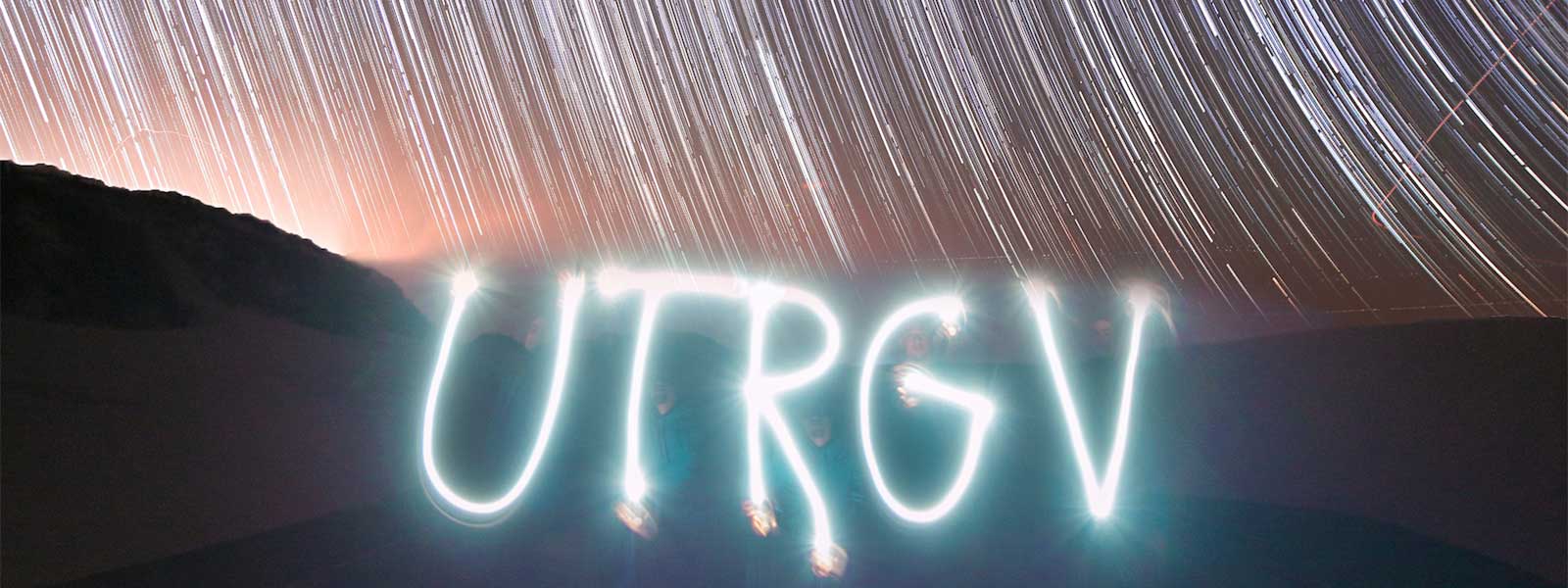Computational Physics
The computer cluster at UTRGV allows researchers to solve complex physical problems that require enormous computational resources. From the analysis of data collected by LIGO, to modeling electromagnetic wave propagation through photonic crystals, computational physics is an essential part of research at UTRGV.
Signal Processing
 Gravitational Wave (GW) data analysis has many computationally challenging problems that require the development of new and efficient approaches. One such problem is that of matched filtering where the detector data must be correlated with a bank of template waveforms in order to find weak isolated signals. This is an optimization problem where the function to be optimized has a forest of local extrema. A simple grid based search for the global maximum rapidly increases in computational cost with an increase in the number of search parameters. In fact, some searches, such as those for GW signals from deformed Pulsars are currently limited in their sensitivity purely because there isn't enough computing power available to carry out the full search. Innovative methods are needed and we are currently exploring several avenues. One of them is the use of stochastic optimization methods and, in this context, UTRGV has taken the lead in applying the popular Particle Swarm Optimization (PSO) method to problems in GW data analysis. PSO is inspired by natural systems, such as the flocking behavior of birds or human social interaction, and is turning out to be a very effective approach to many optimization problems. Another computationally intensive challenge in GW data analysis is that of resolving multiple GW sources in data from a non-directional detector (as most GW detectors are). Research is being carried out at UTRGV on this problem as well using a range of different approaches.
Gravitational Wave (GW) data analysis has many computationally challenging problems that require the development of new and efficient approaches. One such problem is that of matched filtering where the detector data must be correlated with a bank of template waveforms in order to find weak isolated signals. This is an optimization problem where the function to be optimized has a forest of local extrema. A simple grid based search for the global maximum rapidly increases in computational cost with an increase in the number of search parameters. In fact, some searches, such as those for GW signals from deformed Pulsars are currently limited in their sensitivity purely because there isn't enough computing power available to carry out the full search. Innovative methods are needed and we are currently exploring several avenues. One of them is the use of stochastic optimization methods and, in this context, UTRGV has taken the lead in applying the popular Particle Swarm Optimization (PSO) method to problems in GW data analysis. PSO is inspired by natural systems, such as the flocking behavior of birds or human social interaction, and is turning out to be a very effective approach to many optimization problems. Another computationally intensive challenge in GW data analysis is that of resolving multiple GW sources in data from a non-directional detector (as most GW detectors are). Research is being carried out at UTRGV on this problem as well using a range of different approaches.
Research Faculty

